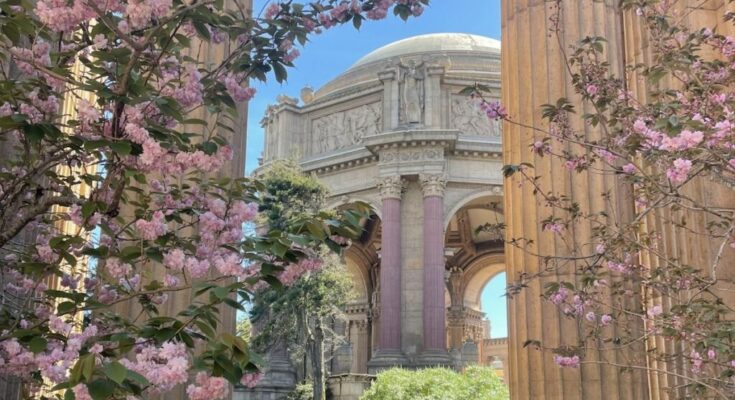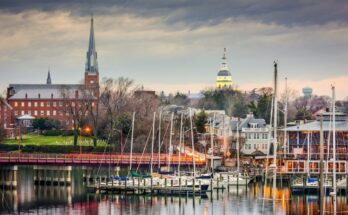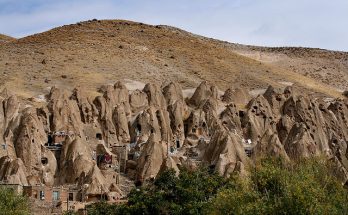People often say that those living in California live in an entirely different reality. Well, San Francisco is a true testament to this. The city is unlike any other, boasting some of the best beaches in California, a history as diverse as the country itself, beautiful Victorian and Georgian architecture, and some of the country’s top restaurants.
But this iconic Californian city isn’t all sunshine and roses. Take its foggy skies, icy wind, economic issues, and exorbitant prices, for example, and we have one of the most complex yet exciting cities in America.
I’ve been lucky enough to call the city home for a few years now and have since learned a lot about the ins and outs of San Francisco. Here are a few things every first-time visitor should know before arriving in the City by the Bay.
It’s San Francisco, Not San Fran or SFO

Even if you’ve never visited before, do yourself a favor and call the city by its full and fabulous name, San Francisco. For some reason, tourists like to nickname the city San Fran or even Frisco, and locals aren’t fans. Some even make the error of calling the city SFO, the abbreviation for the international airport.
SF is a good abbreviation in written form. In fact, calling San Francisco ‘The City’ is a popular term when comparing it to ‘The Bay Area’ to describe the surrounding cities and suburbs.
San Francisco Could Have Its Own Language

To build on what not to call the city, San Francisco could very well have its own language. After a few weeks in the city, you’ll catch yourself using ‘hella’ to mean anything in abundance, ‘dank’ to mean ‘really good’, and the confusing ‘yeah na’, to mean ‘no’.
When you hear passers-by speak about Muni, they’re talking about Municipal Railway public transportation that operates buses and trams throughout the city. BART, on the other hand, refers to the city-regional train system that connects San Francisco with Palo Alto, the airport, and Oakland.
Prepare for Any Weather

San Francisco’s weather can be unpredictable at best and inhospitable at worst. Due to its location along the Pacific Coastline, the city experiences a wave of fog and cool weather, which is especially cold in the summer months.
The fog here even has a name. Locally called Karl the Fog (he even has an Instagram account), foggy weather not only impairs the beautiful views the city is known for but also brings a wintery chill that can only be avoided with a thick Patagonia puffer jacket—there’s a good reason these jackets are so popular in the city.
Between seasons, spring and fall are the best times to visit. While the weather inland of the ocean is typically mild and sunny, it is still usually cold and windy along the coastline.
Pro Tip: Cross-check the weather daily on various weather apps, and always dress in layers. Flowing dresses are usually not a good idea.
The Bay Bridge is Not the Golden Gate Bridge

A common error many first-time visitors make is confusing the Golden Gate Bridge with the Bay Bridge. It’s true; not many will visit this city without the Golden Gate Bridge on their bucket lists, but there is another – dare I say, equally as impressive – bridge in the city.
While the iconic red suspension bridge (The Golden Gate Bridge) connects the northern part of the city at the Presidio with Mill Valley at the meeting point between the San Francisco Bay and the Pacific Ocean, the Bay Bridge connects the eastern part of the city center with Oakland and Emeryville, crossing The Bay itself.
Pro Tip: While it might get less attention, don’t underestimate the Bay Bridge. This stunning marvel crosses through Yerba Buena Island and is one of the most astonishing car bridges in the country.
Getting Around San Francisco

The city is so hilly that some sidewalks are staircases, and cars get fined for not parking at the right angles. While some neighborhoods (like the Mission, The Filmore, and The Sunset) are relatively flat and walkable, it’s not considered the most walking-friendly city.
Luckily, the transport makes up for it. The city has buses, streetcars, and trains (run by Muni) that connect the neighborhoods. The best way to pay for travel is with a Clipper Card, which can be downloaded onto your smartphone and used to pay for Muni. A single trip costs $2.50 and lasts 90 minutes, regardless of how many buses you take. There are no zones.
The BART (Bay Area Rapid Transit) system connects the city to Oakland, Palo Alto, and San Jose. It’s slightly more expensive depending on how far you travel. For example, a BART from the inner city to SFO costs $10.55 and does not include your Muni ticket.

Bay Wheels (an electric bike service offered by Lyft) are a popular way to get around the city, too. Of course, there are plenty of Lyfts and Ubers for late-night adventures. Heck, Waymo is a new rideshare app that will have you cruising the streets in a self-driving car!
Take Advantage of Free Events

Calling this one of the most expensive cities in the US would be an under-exaggeration. One of the best ways to stretch your wallet is to attend free events throughout the city. Some of my favorites include an LGBQTIA+-friendly Easter event in Dolores Park, free music concerts in Golden Gate Park, and monthly free museum days at some of the city’s finest museums, including MoMA, The Conservatory of Flowers, and the De Young Museum.
The city is also known for its cultural parades, including St Patrick’s Day celebrations, Japanese and Chinese New Year, and Cinco de Mayo.
Pro Tip: Check the latest schedules for free events on Secret San Francisco’s Instagram.
Tourist Traps vs Worthwhile Attractions

Like any city, there are a few places worth visiting once and only once. For me, these include the waterfront, Quay 49, and Alcatraz. On the other hand, popular tourist attractions like the Golden Gate Bridge, The Painted Ladies, the Haight Ashbury neighborhood, and Golden Gate Park are well worth spending some time around. While they might be touristy, they aren’t kitch or overpopulated for it.
San Francisco is an Active City

The city is as active as they come. At any given time, you can spot people cycling through the city, on off-road tracks, running through parks, walking dogs, and even swimming in the Bay.
Make Reservations

The city can get busy. Even on the most arbitrary of evenings, I have found myself regretting my last-minute tendencies and missing out on some great restaurant meals. Don’t make the same mistake as I did, and book restaurant reservations in advance using Resy. Most don’t require a deposit.
Cars Can Drive Themselves

Car moving without a driver? You’re not going crazy; cars can drive themselves here. San Francisco is a part of Silicon Valley, after all, and many of the first self-driving vehicles are tested in the city because of its easy-to-navigate grid formation.
Where to Stay

Do your research when booking accommodation. There are certain areas you’ll want to avoid entirely for safety and hygiene reasons. For instance, the Tenderloin and Market Street areas were once flourishing neighborhoods but can now be unsafe after dark.
Don’t make the same mistake that so many tourists do and stay right in the heart of the city. Your best bet is to stay further out in neighborhoods like The Marina, Pac Heights, Nob Hill, and even as far as The Filmore, The Mission, and Haight Ashbury.
I advise all culture vultures to head for Chinatown, which is the oldest Chinatown in the USA. History buffs might enjoy the hippie center of Haight Ashbury. One of my favorite areas, The Castro, is particularly friendly to LGBTQIA+ allies.
Learn a Bit of History

From the 1850s Gold Rush to the 1960s Summer of Love, the city is overflowing with history. One way to make the mundane more exciting is by learning a bit about the most famous neighborhoods and attractions. There is nothing cooler than comparing the city today to historic photographs of it in its hey-day.
Explore The Surrounding Pacific Coastline

My main advice is not to ignore the surrounding towns and neighborhoods of the Bay Area. Just a short drive across the Bay Bridge or Golden Gate Bridge, you’ll find incredible mountains and hikes, beaches, seaside coves, and university towns like Berkeley and Stanford.
My favorite hikes are just over the bridge in the Marin Headlands. Follow the Dipsy trail or head towards the Point Bonita Lighthouse for iconic bridge views. Even as a local, these views don’t get old. You could also catch the Amtrak train from Emeryville and explore the state by train.
Pro Tip: Renting a car is a great idea for day trips. Just note that crossing both bridges inbound to San Francisco costs $7 per vehicle (outbound is free). To avoid the toll, head south along Highway 1 into Pacifica, Half Moon Bay, and towards Santa Cruz – another coastal haven just an hour and a half away.





